Diane Faye Zerr
Designer, Letterer, Illustrator
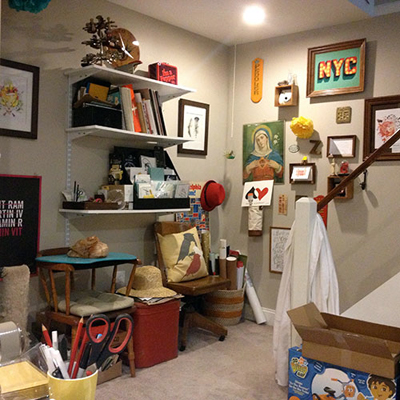
View from desk
Primary design concentration:
Advertising Design, and somewhere along the line, I switched to Lettering and Illustration
Most preferred tools for designing:
Pencil and Markers
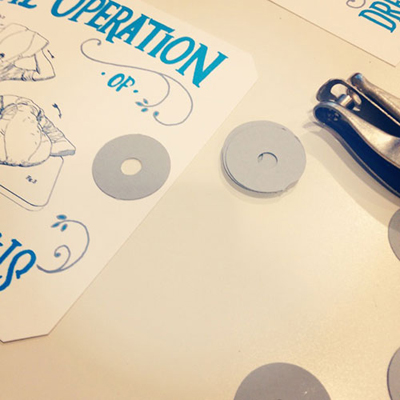
Hand tags
How and why did you choose to become a designer?
I made the official decision once I signed up to attend the Vocational/Technical School during high school for Commercial Art. For my last three years in high school, I spent the second half of my days learning design.
What are some of the challenges you encounter as a designer and how do you deal with them?
The biggest challenge is juggling a number of projects at any moment and keeping it all straight in my workflow. I could have as few as one or no projects (which makes me panic and think I should be doing more) up to twenty where I’m feeling completely insane and overwhelmed. But I always come back to working on one thing at a time. Then when I actually get caught I up, I realize it wasn’t all that bad in the first place!
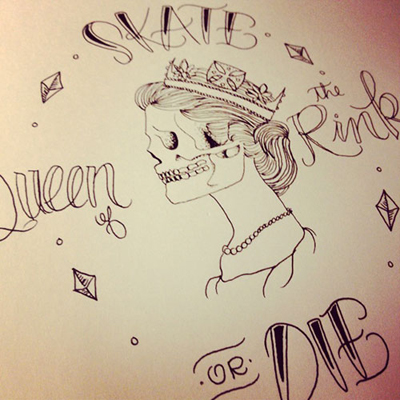
Detail of “Skate or die” sketch
What is your definition of an “elegant solution,” that is, good design?
In each of my designs, regardless of whether it is lettering, print design, or illustration—it all comes down to a certain balance. There can’t be something in the piece that stands out in an awkward way, so I just make sure it’s as clean and balanced as can be (even if there’s a rough or edgy-looking theme design, it needs balance).
From skills to values, what makes a designer successful?
Both. To be successful, you have to reach a certain level of taste or style and be able to apply it to your work. Seeing something good, and creating something good are two different things. A person who can do both, has the skills to succeed as a designer. Values are important as they can be seen through your work (depending on the project, of course), but they play an important role in your life not only as a designer, but as a person—and you can’t always hide behind the computer or email.
How do you stay motivated and grow personally and professionally as a designer?
I like to try new things. This past summer, I was stuck in a state that I can’t explain—maybe a creative block? But once I relaxed a bit, and started to just enjoy my time with other things, the motivation for work came right back to me. Vacations are a must, don’t forget to recharge.
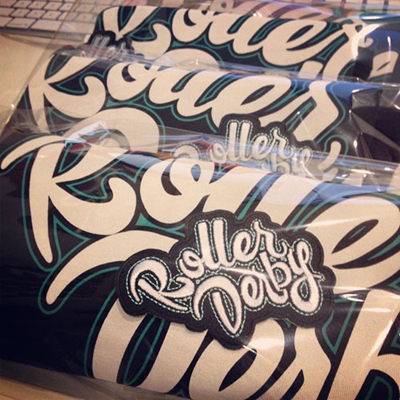
Packaging design and lettering for “Roller Derby Script” Patch and Shirt
For those aspiring to become a designer, whatever the discipline, what is your advice?
Find not just what you’re really good at, but what you love to do—and everything else will fall into place. Work hard and the ‘success’ will follow. Don’t expect to everyone love your work.
What is your quest in design, from a professional practice, education or evolution standpoint?
I can’t say I really have a quest, but I would really like to focus on keeping a hand-done touch to my work—whether it be completely made by hand, or even just one small element. I want my designs to have a piece of me in them.
Previous: Kate Koeppel | Next: Veronica Corzo-Duchardt
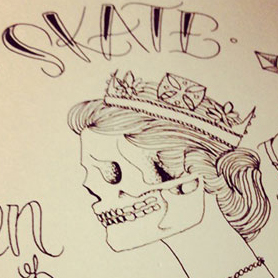
Support this solo initiative
What began as a collection of links has evolved into a comprehensive archive committed to creative culture—offering so far 395 interviews with under-the-radar Artists, Designers & Makers, in addition to 202 write-ups across events, books, movies, more. Free to explore. Free from ads. If you gain a level of motivation, knowledge, even delight, from Design Feast, please support on Patreon. Thanks for your consideration!
Wishing you continual success,
Nate Burgos, Content Creator & Publisher
Comments
There are no comments yet.
Leave Your Comment